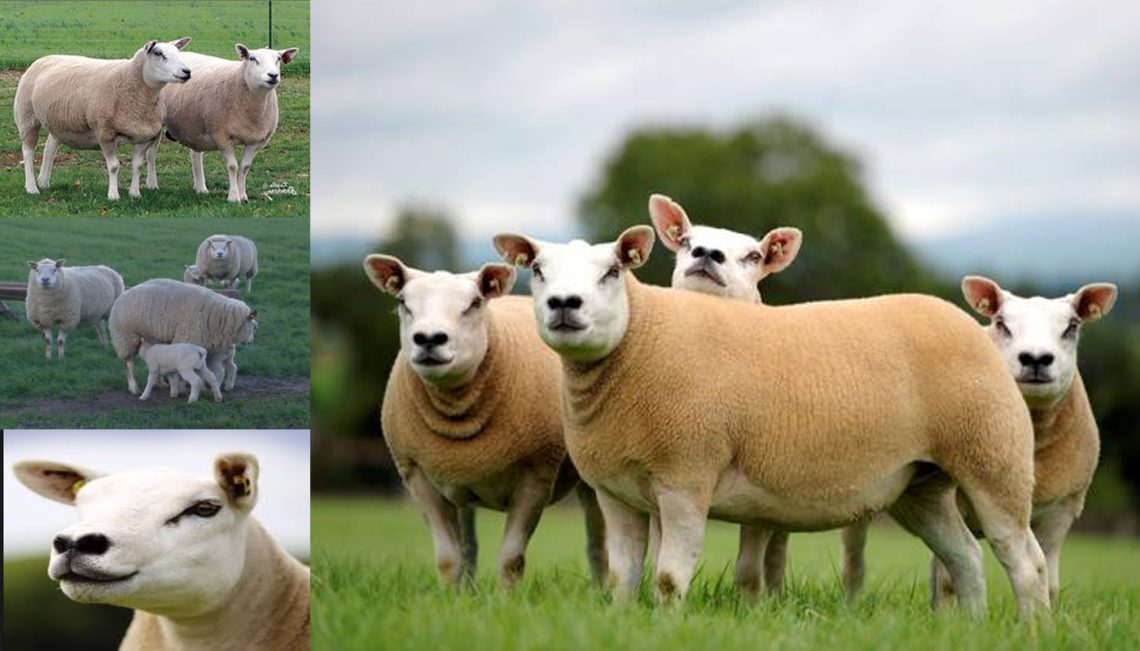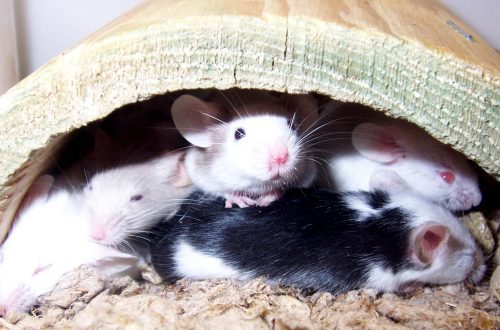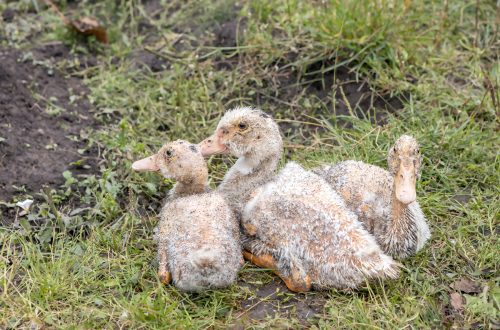
Texel sheep: the taste of meat, how much wool you can get
By the time perestroika began, there were about 64 million sheep in Russia. Then this figure dropped catastrophically to 19 million. Now the situation is gradually recovering and is already on the rise, but it is still a long time to wait for the former prosperity in this area, today sheep breeding is only increasing.
The cost of a kilogram of sheep wool is about 150 rubles. Price per kilogram of lamb on the market fluctuates around 300 rubles. Meat is cheaper at cost, since in order for 1 kg of wool to go on sale, feed is needed 6 times more. Therefore, in order to justify the cost of keeping fine-fleeced sheep, prices must be increased tenfold. Thus, today sheep breeders have concentrated on growing meat breeds of sheep.
Contents
Meat breed of sheep. general characteristics
The specialization of sheep breeding in the production of young mutton requires the presence of breeds that differ high meat productivity. This requirement is fully met by meat-wool and meat breeds.
Meat breeds have high meat-fat productivity. All year round they are able to be kept in pasture conditions, soot in the most difficult forage and natural conditions, they are able to easily adapt. Meat breeds, subject to the necessary feeding conditions, can “feed up” a large supply of fat during the year. They have fat deposits around the base of the tail and are called fat tail. Such fatty deposits are necessary for animals to maintain life during cold weather, when pastures are covered with snow or ice, as well as during periods of heat, when grass burns out and there is a lack of water.
Sheep breed “Texel”
“Texel” – oldest breedknown since Roman times. The name of the breed appeared in the 19th century and came from the Dutch island of the same name, which became famous for the most meaty and early maturing breeds, besides, they gave excellent wool. Sheep breeders liked her so much that they decided to cross her with the English breed “Lincoln”, and this is how the modern breed of texel appeared. Today this breed is one of the most popular in Australia, New Zealand, America – these countries are world exporters of lamb meat.
Characteristics of texel meat
Texel is typical beef breed, it gained popularity due to its unique meat qualities and is one of the best in terms of taste. The main distinguishing feature of the breed is the high content of muscle tissue in carcasses; when slaughtering an animal, meat in relation to weight is 60%. It is nutritious, good texture, juicy, has no specific smell inherent in lamb, with its own unique taste, does not leave a greasy unpleasant taste in the mouth, and it takes little time to cook meat.
Young meat very juicy and tasty, gourmets characterize it as marble. At milk age, the mass fraction of the skeleton is significantly inferior to the total proportion of meat, the slaughter yield is 60%. It does not have a specific smell inherent in lamb. It can be used in the preparation of dietary dishes, as it is lean. Lamb meat takes less time to cook than meat dishes from other animals, after a meal it does not have a greasy aftertaste in the mouth. The mass fraction of the fat layer is reduced to a minimum. In lambs, the meat has excellent taste properties; when cooked, it becomes tender.
External signs of the breed
- Thoroughbred sheep texel have the right physique, white skin and a small head with a black nose. But the white coat is not the most accurate indicator of the breed, as some may be golden brown, while the head and legs remain white. Sometimes you can also find a very light, even bluish sheep, with dark colors of the legs and head. Sheep breeders call such texels “blue”.
- Distinctive features of the breed are a flat, narrow forehead and the absence of hair on the head and ears.
- The tail of the animal is small and thin.
- short neck smoothly turns into a powerful torso.
- The legs are distinguished by increased strength, muscular, wide hips – these qualities are an advantage when overcoming long distances during fast running. The legs are not covered with hair, so the muscles are clearly visible, especially on the hind legs.
- Polled breed, small hints of horns betray some rams. An adult sheep weighs an average of 70 kilograms, while a ram reaches 170 kilograms.
- The growth of a sexually mature ram at the withers is approximately 85 centimeters, sheep – 75 centimeters.
Breed subtypes
Over the two-century history of the existence of the breed, sheep breeders from different countries have made their own adjustments in breeding, improving its properties. The result was the appearance of several subtypes of the breed:
- English. These sheep are tall and powerfully built, in other respects they do not differ from the above-described traits of the Texel breed.
- French. In this subtype, lambs are characterized by high rates of growth and maturation when compared with other subtypes.
- Dutch. Rams and sheep of the Texel breed with low legs, with a low position of the body, have a lot of weight and well-developed muscles.
Sheep wool
Despite the subtype, it must be remembered that the breed was bred exclusively to obtain high-quality meat in large quantities, therefore it is possible to get about 6 kilograms of wool per shearing from an adult ram, and less per kilogram from a sheep. Animals are shaved, be sure to cut everything to the last villi, the output should be one bare skin.
Wool is mainly used for knitting socks and stockings, as well as in the production of knitwear, since the high content of fatty glands makes it very soft. The wool of the texel is thick, dense, semi-thin white without black blotches, curls in large ringlets, with a compacted base, sticks up and has a large amount of grease. Wool quality corresponds to class 56, with a fiber thickness of about 30 microns. At the output, washed wool makes up 60% of the total sheared mass.
Where to graze, with whom and how
Don’t forget that sheep are herd animals, this instinct is extremely developed in them, and without a flock, a sheep can not only get lost in the sheepfold, but also be very worried about loneliness. These characteristics apply to almost all animals, but not to the Texel breed. These animals do not have a herd feeling and do not need a company of their own kind, feeling great alone. They are also free to navigate the terrain and are not able to get lost, even if they walk far from the farm. Texel sheep love the company of other animals, which other breeds of sheep, as a rule, do not tolerate. Cattle, goats and even horses are excellent neighbors of this breed.
Feel great on mountain pastures, because love to overcome obstacles and are distinguished by great endurance, so it is best to graze them there. Sheep feel great even when they are on the street all year round, they do not need sheds and sheds. Sheep are not susceptible to diseases, their body has a high immunity that protects them even in wet and cold living conditions. Unlike other breeds of sheep, this one can be grazed on swampy soils and grasses, their body copes well with possible infection with parasites, in particular, roundworms. Unpretentious in content, when it comes to living conditions, they calmly endure frost and cold.
Raising lambs
These animals quite prolific, as a rule, twins or triplets appear in the offspring, one lamb is rarely born. Usually, 180 cubs are born in a flock of a hundred sheep, and in fertile years their birth exceeds two hundred, mostly twins are born. The minus of the breed is to receive only one offspring per year; neither hormonal supplements nor selective crosses can change this life cycle. Lambing occurs only once a year for many years.
A newborn weighs up to seven kilograms, at two months it gains weight up to 25 kilograms, at eight it weighs 50 kilograms. You need to know that intensive growth and weight gain occurs in lambs up to three months of age, they can gain 400 grams per day, then there is a sharp decline, during which the average daily rate is 250 grams, and no additives can change this pattern.
Since lambs are born with a weight sufficient for independent living, they can be released to pasture the next day after birth. This circumstance covers all the shortcomings of the breed, which are associated with rare lambing. Newborns do not need special care, but it is better for them to wait out severe frosts in the shed with the sheep, they need to place the lamb there immediately after birth for two days. The placement of the lamb with its mother is a necessary action, and is intended to strengthen the maternal instinct, since it is poorly developed in this breed of sheep.
Crossbreeding, lambing
The texel breed has a random period coming in september and lasts until January. During this time, all healthy and sexually mature females are inseminated. With autumn conception, childbirth occurs in late winter or early spring. Sheep reach puberty at seven months, at this age they can already be brought to the ram-producer. Some farmers wait until the animal reaches one year of age, and then carry out the first mating – this allows you to simplify the lambing period.
Crossing occurs both artificially and freely. In the process of mating with sheep of other breeds, the best meat qualities of the Texel breed are passed on to the future generation.
Ordinary sheep during the lambing period do not need help, but as we already know, this breed is an exception to the rule. Lambs of this breed appear very hard, dead babies are often born, or the mother dies. The reason for the difficulties of lambing lies in the large weight of the lamb and the large irregular shape of the head.
To help with lambing, you need to stock up on warm water, rope and gloves, you may have to pull the lamb by the legs, pulling a little, tying a rope to them. If the baby shows the head first, then it is necessary to turn the body of the lamb to a more convenient position for lambing. In this case, you simply cannot do without a veterinarian, the delivery of a large number of sheep is accompanied by special duties. Lambing takes place exclusively at night.
Everyone who plans to breed Texel sheep, remember the following.
- Sheep of this breed are large and hardy, they are distinguished by a large volume of high-quality meat;
- Sheep characteristics and external indicators vary depending on the region of purchase;
- Texel sheep can be bred outside the herd, since they are loners, they also feel comfortable next to other pets, not sheep;
- Lambing takes place once a year, those who hope for more risk being disappointed, they better choose a different breed of sheep;
- Often a sheep gives birth to twins at one time, and triplets and more are not uncommon. A sheep has increased milk qualities, so it is able to feed at least two lambs. Childbirth is not easy, the help of a veterinarian is needed.
- Lambs grow quickly and put on weight, reaching slaughter weight in the shortest possible time.
- Sheep meat has a specific taste, it is nutritious and suitable for diabetics.





